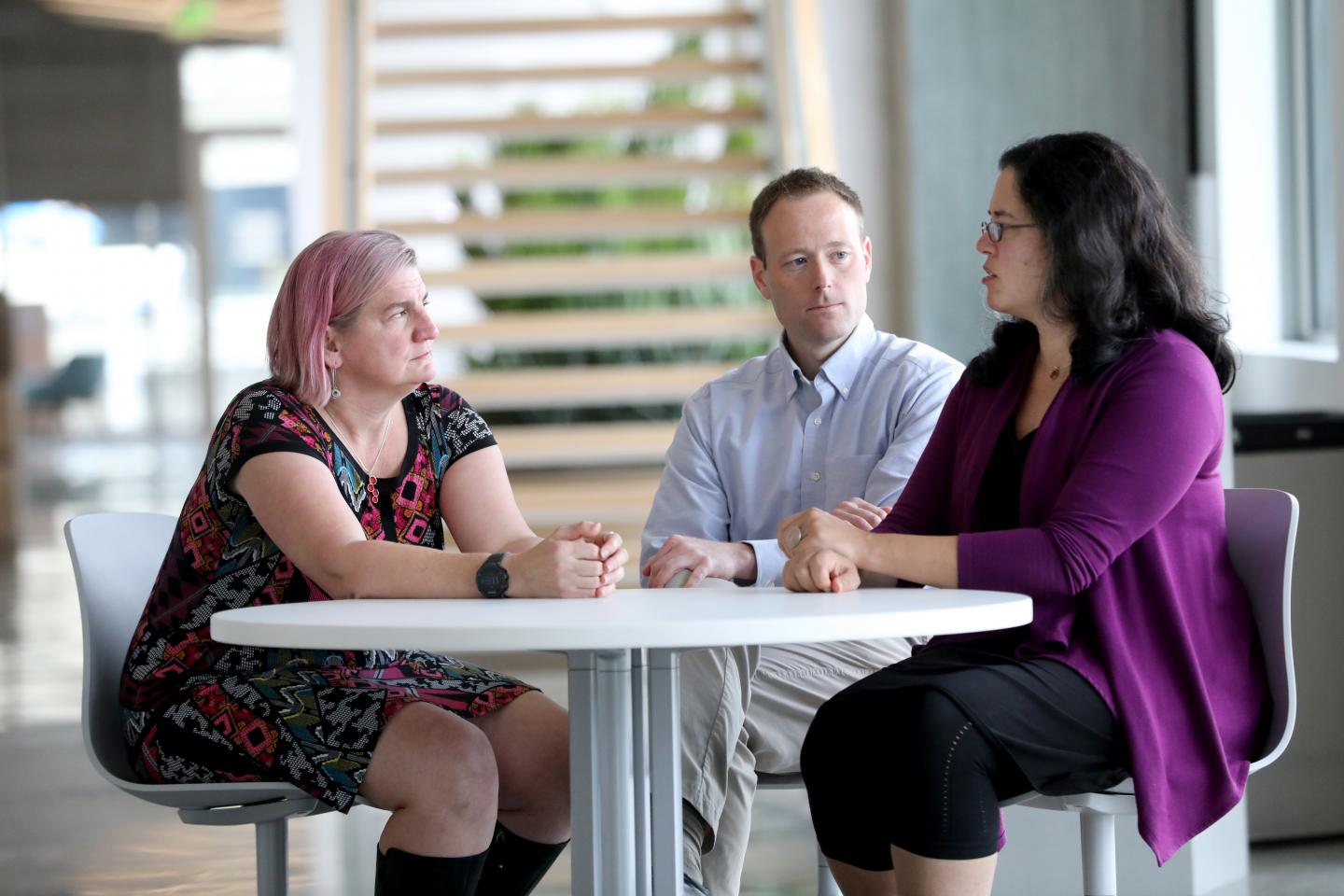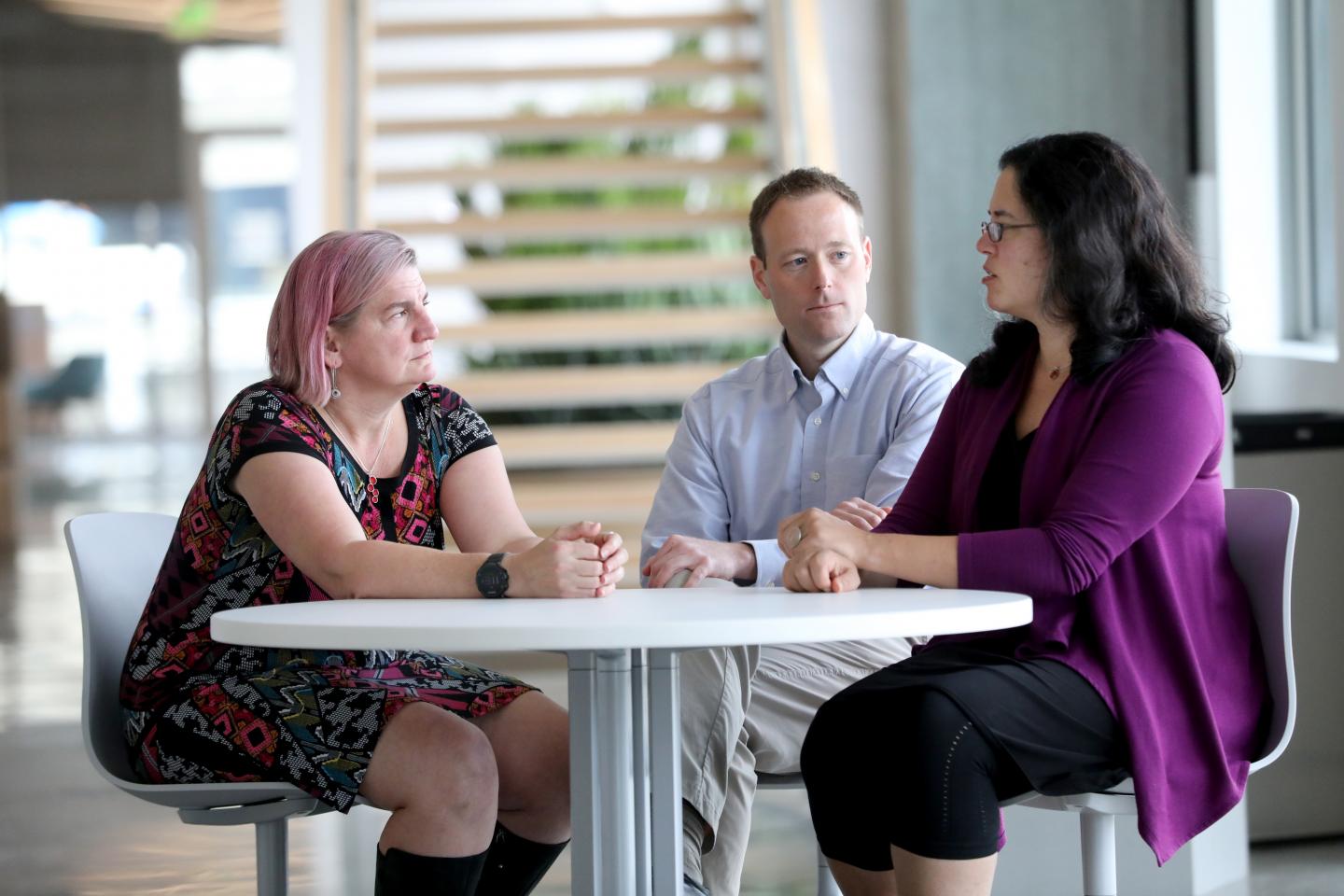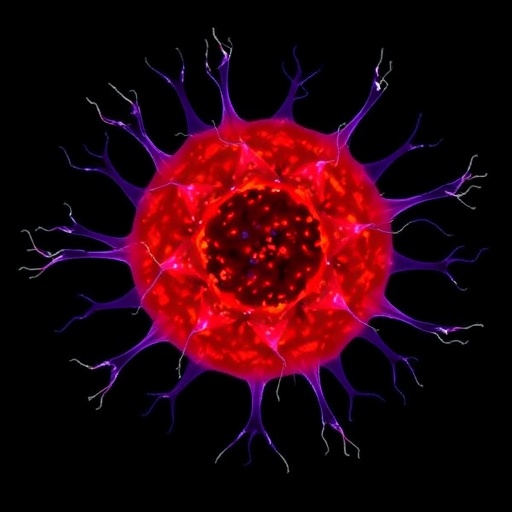
Credit: OHSU/Kristyna Wentz-Graff
PORTLAND, Oregon – After more than five years and 672 patient samples, an OHSU research team has published the largest cancer dataset of its kind for a form of leukemia. The study, "Functional Genomic Landscape of Acute Myeloid Leukemia", published today in Nature.
Acute myeloid leukemia, or AML, has a low survival rate: less than 25 percent of newly diagnosed patients survive beyond five years. Developing effective, targeted AML therapies has proved challenging because AML is not a single disease, but a disease of many types. Consequently, the standard of care has largely remained unchanged for the past 40 years.
Brian Druker, M.D., director of the OHSU Knight Cancer Institute, was the study's co-corresponding author and among the researchers who led the effort to bring this wealth of data to the research and clinical communities.
Druker says this study is a prime example of AML research underway as part of a multi-institution collaboration called the Beat AML initiative, sponsored by the Leukemia & Lymphoma Society, or LLS. The OHSU Knight Cancer Institute is one of several cancer institutes across the country partnering with LLS to seek new treatments for the disease.
Study co-first author Jeff Tyner, Ph.D., associate professor of cell, developmental and cancer biology in the OHSU School of Medicine and researcher with the OHSU Knight Cancer Institute, says the vision from the start of the project in 2013 was to collect a truly comprehensive dataset. Tyner and team sought to have both an understanding of the genomic sequencing and molecular make-up of these samples, as well as information on how the tumor cells respond to various drugs in laboratory screenings.
Having specific clinical information — including how tumor cells from 409 of the samples responded to 122 different targeted therapies — sets this study apart from other datasets that have been published to date, Tyner says.
"When you have clinical information that is well integrated with research data, you can ask more questions of the data," he says. "Let's say a physician sees an AML patient with a particular gene mutation. With the lab screening information we have, our dataset can be useful to see if that particular gene mutation corresponds with certain drug sensitivities. We believe this dataset will help researchers and physicians solve those specific kinds of questions more easily."
A massive amount of data
The sheer amount of data garnered from these samples begged a logistical question: once you have all this data, how do you go about sharing it with the research community in a meaningful way? The study's other co-corresponding author, Shannon McWeeney, Ph.D., professor and head of bioinformatics and computational biology in the OHSU School of Medicine and an OHSU Knight Cancer Institute researcher, and her team led the data coordination, analysis and modeling for the project. A major contribution to the study was their development of a new data visualization platform called Vizome.
"The flood of high throughput, multi-dimensional data has the potential to overwhelm scientists and clinicians, isolating them from knowledge discovery," McWeeney says. "This necessitates a new generation of scientific computing approaches and strategies to manage, integrate and visualize the data, fueling exploration. Vizome allows anyone to explore these data, ask questions, and start pursuing answers."
McWeeney says Vizome can help facilitate accelerated biomedical translation and new breakthroughs as well as novel hypotheses for understanding and treating AML. In McWeeney's group, Vizome was developed by Libbey White, M.F.A., Daniel Bottomly, M.S., and Beth Wilmot, Ph.D., who led the team.
A collaborative consortium
The OHSU team is quick to acknowledge the contributions of collaborators across the country. Representatives from 11 academic medical centers played key roles in collecting and analyzing the 672 samples of cancer cells from 562 patients. Pharmaceutical and biotechnology companies, 11 in total, also contributed to the effort, by supplying drugs for testing.
Druker lab scientific director, Cristina Tognon, Ph.D., was a co-first author on the paper and led coordination efforts among the various contributors.
"The strength of the consortium really helped drive the project," Tognon says. "It took everyone working together to achieve this goal. We couldn't have done this alone."
McWeeney agrees and says the project exemplifies the deep level of collaboration that will be needed to make progress against cancers as difficult to treat as AML. "It's time for a new model," she says. "And this paper represents a new model of collaboration."
'Parlaying' the information to patients The project's ultimate goal, Tyner says, is to test these hypotheses in clinical trials.
"We have some clinical trials starting now, and others we're developing, that will test some of our hypotheses," says Tyner. "You can start to sense some momentum building with new, better therapeutics for AML patients, and hopefully this dataset will help fuel that momentum even further. We want to parlay this information into clinical trials as much as we can, and we also want the broader community to use this dataset to accelerate their own work."
###
Participating Academic Medical Centers
- University of Texas Southwestern Medical Center
- Huntsman Cancer Institute at the University of Utah
- Stanford University
- University of Colorado
- University of Miami Sylvester Comprehensive Cancer Center
- Fox Chase Cancer Center
- National Cancer Institute
- University of Florida
- The University of Kansas Cancer Center
- The Ohio State University
Particulars: Study co-author Brian Druker, M.D., director of the OHSU Knight Cancer Institute, is a Howard Hughes Medical Institute Investigator.
Funding for this project was provided in part by a Therapy Acceleration Grant from The Leukemia & Lymphoma Society to B.J.D. and J.W.T. and by support provided by the Knight Cancer Research Institute (Oregon Health & Science University, OHSU). Supported by grants from the National Cancer Institute (1U01CA217862, 1U54CA224019, 1U01CA214116, 3P30CA069533-18S5) and NIH/NCATS CTSA UL1TR002369 (SKM, BW). ASB was supported by the National Library of Medicine Informatics Training Grant (T15LM007088). JWT received grants from the V Foundation for Cancer Research, the Gabrielle's Angel Foundation for Cancer Research, and the National Cancer Institute (1R01CA183947). CRC received a Scholar in Clinical Research Award from The Leukemia & Lymphoma Society (2400-13), was distinguished with a Pierre Chagnon Professorship in Stem Cell Biology and Blood & Marrow Transplant and a UF Research Foundation Professorship. This work was supported in part by the Intramural Research Program of the National Heart, Lung, and Blood Institute of the National Institutes of Health.
Media Contact
Amanda Gibbs
[email protected]
503-494-8231
@ohsunews
http://www.ohsu.edu





